Exhibition
Kasumi Ueba : ZEPHYR - a gentle wind from west
2021. Jan. 13 (Wed.) – 31 (Sun.)
Art Front Gallery is pleased to announce Kasumi Ueba’s solo exhibition.
| Date | 2021. Jan. 13 (Wed.) – 31 (Sun.) |
|---|---|
| Hours | Wed. - Fri. 12:00 - 19:00 / Sat. Sun. 11:00 - 17:00 |
| Closed | Mondays and Tuesdays |
Kasumi Ueba Exhibition
Tomohiro Daicho, Curator, National Museum of Modern Art, Kyoto
Recently ‘decorative’ ceramics have become prevalent. Kasumi Ueba is a leading figure in this move.
One is struck from the first by the multi-coloured decorations that cover her work. Luxurious and mysterious gold also gives her pieces a dignified quality. However, her work is not that of the virtuoso, who generates a relationship between person and object based on technique alone. Neither is Ueba an artist who reconfirms her inner emotions by contact with material. One can say her project is to investigate humanity itself, and to harness our urge to fill the world with ornament - a universal and indispensable element in every culture. In this sense she is not just one more ornamental ceramicist, but someone who makes us realise rich traditions and culture across the history of ceramics and plastic arts.
Of late Ueba has engaged with the theme of the chimera. She links this with a sense of longing for the area of the Silk Road, which stretched across today’s Chinese and Islamic worlds. This Exhibition will show those new pieces. Chimera are creatures from Greek myth, said to possess different elements at one and the same time. In biology, the term is used to denote an individual with multiple sets of genetic information within a single body. Ueba longed to see these places, but unfortunately, Covid-19 made it impossible for her to visit them. Instead, she took forms and images from stories or cultural artifacts available in Japan, using these to think about those far-off destinations. Her themes are represented in the form of the pure and condensed imagination.
Ornament exists for the sake of something else. The colour, gold and silver that Ueba applies to her chimera serve to give form to ideas. Their surface liveliness suggests chance cultural meetings along the Silk Road, where heterogeneous elements coexisted. Ueba’s grandfather was a designer for a traditional Kyo-Yuzen dying and his and old design drawings had been scattered around the house. Also important to her notion of decoration are features taken from historic Kyoto ceramics artists, like Ogata Kenzan and Nonomura Ninsei, which Ueba has referred to in her own work. Kyoto was Japan’s capital for 1200 years, and all kinds of information ended up there. Kyoto crafts advanced through aggregating and editing such material. Indeed, they became possible thanks to the same heterogeneity that characterises Ueba’s chimera, and they use similar figures. In this way, Ueba connects to the world via Kyoto. Such are the qualities underlying in her work.
Tomohiro Daicho, Curator, National Museum of Modern Art, Kyoto
Recently ‘decorative’ ceramics have become prevalent. Kasumi Ueba is a leading figure in this move.
One is struck from the first by the multi-coloured decorations that cover her work. Luxurious and mysterious gold also gives her pieces a dignified quality. However, her work is not that of the virtuoso, who generates a relationship between person and object based on technique alone. Neither is Ueba an artist who reconfirms her inner emotions by contact with material. One can say her project is to investigate humanity itself, and to harness our urge to fill the world with ornament - a universal and indispensable element in every culture. In this sense she is not just one more ornamental ceramicist, but someone who makes us realise rich traditions and culture across the history of ceramics and plastic arts.
Of late Ueba has engaged with the theme of the chimera. She links this with a sense of longing for the area of the Silk Road, which stretched across today’s Chinese and Islamic worlds. This Exhibition will show those new pieces. Chimera are creatures from Greek myth, said to possess different elements at one and the same time. In biology, the term is used to denote an individual with multiple sets of genetic information within a single body. Ueba longed to see these places, but unfortunately, Covid-19 made it impossible for her to visit them. Instead, she took forms and images from stories or cultural artifacts available in Japan, using these to think about those far-off destinations. Her themes are represented in the form of the pure and condensed imagination.
Ornament exists for the sake of something else. The colour, gold and silver that Ueba applies to her chimera serve to give form to ideas. Their surface liveliness suggests chance cultural meetings along the Silk Road, where heterogeneous elements coexisted. Ueba’s grandfather was a designer for a traditional Kyo-Yuzen dying and his and old design drawings had been scattered around the house. Also important to her notion of decoration are features taken from historic Kyoto ceramics artists, like Ogata Kenzan and Nonomura Ninsei, which Ueba has referred to in her own work. Kyoto was Japan’s capital for 1200 years, and all kinds of information ended up there. Kyoto crafts advanced through aggregating and editing such material. Indeed, they became possible thanks to the same heterogeneity that characterises Ueba’s chimera, and they use similar figures. In this way, Ueba connects to the world via Kyoto. Such are the qualities underlying in her work.

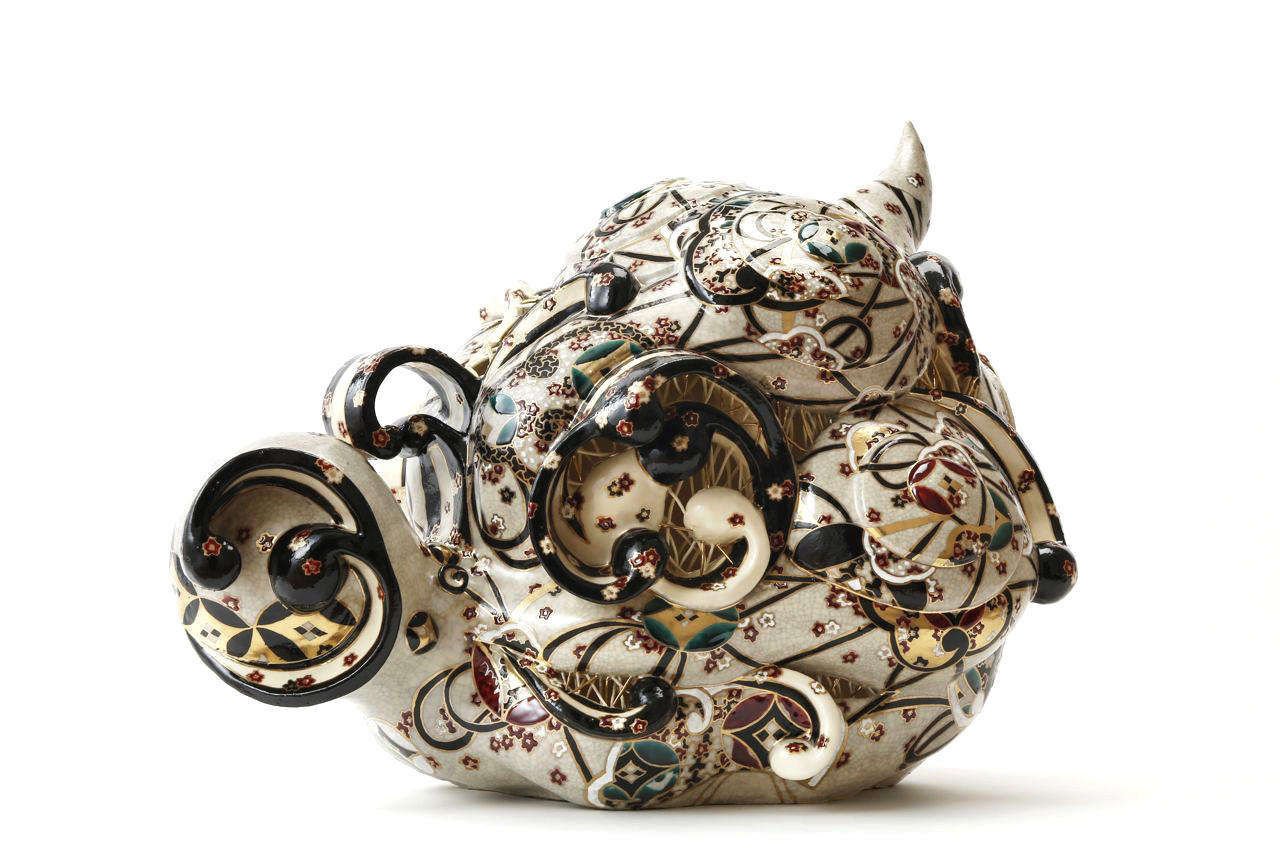


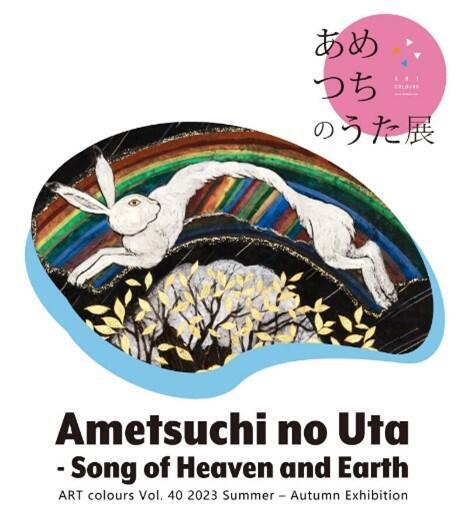
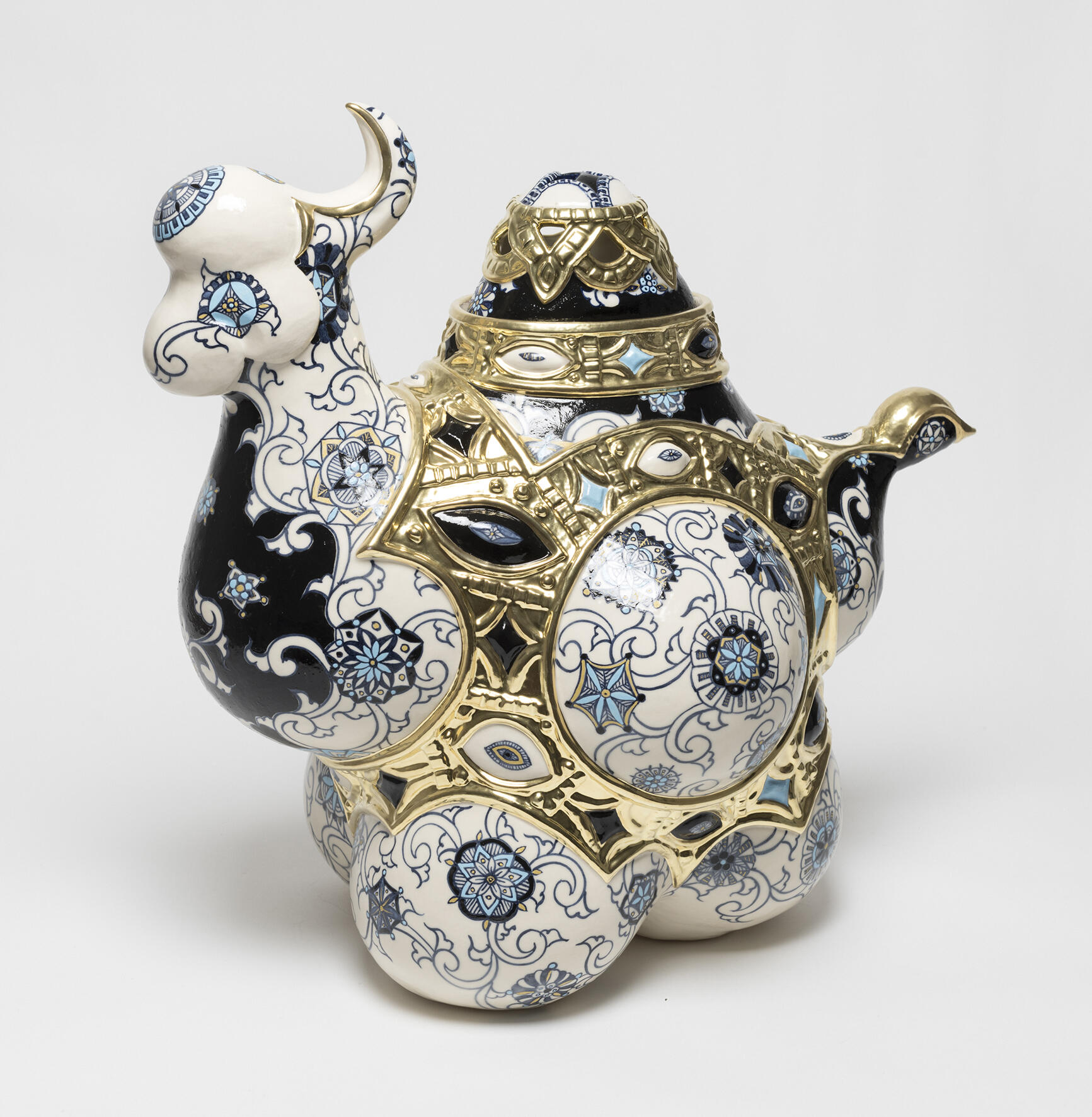
![[Interview] Kasumi Ueba : ZEPHYR - a gentle wind from west](https://artfrontgallery.com/whatsnew/assets_c/2021/01/0f6d7a916ad3fd3ff25774f4efc1b9d3daf3edc0-thumb-2837x2837-8418.jpg)
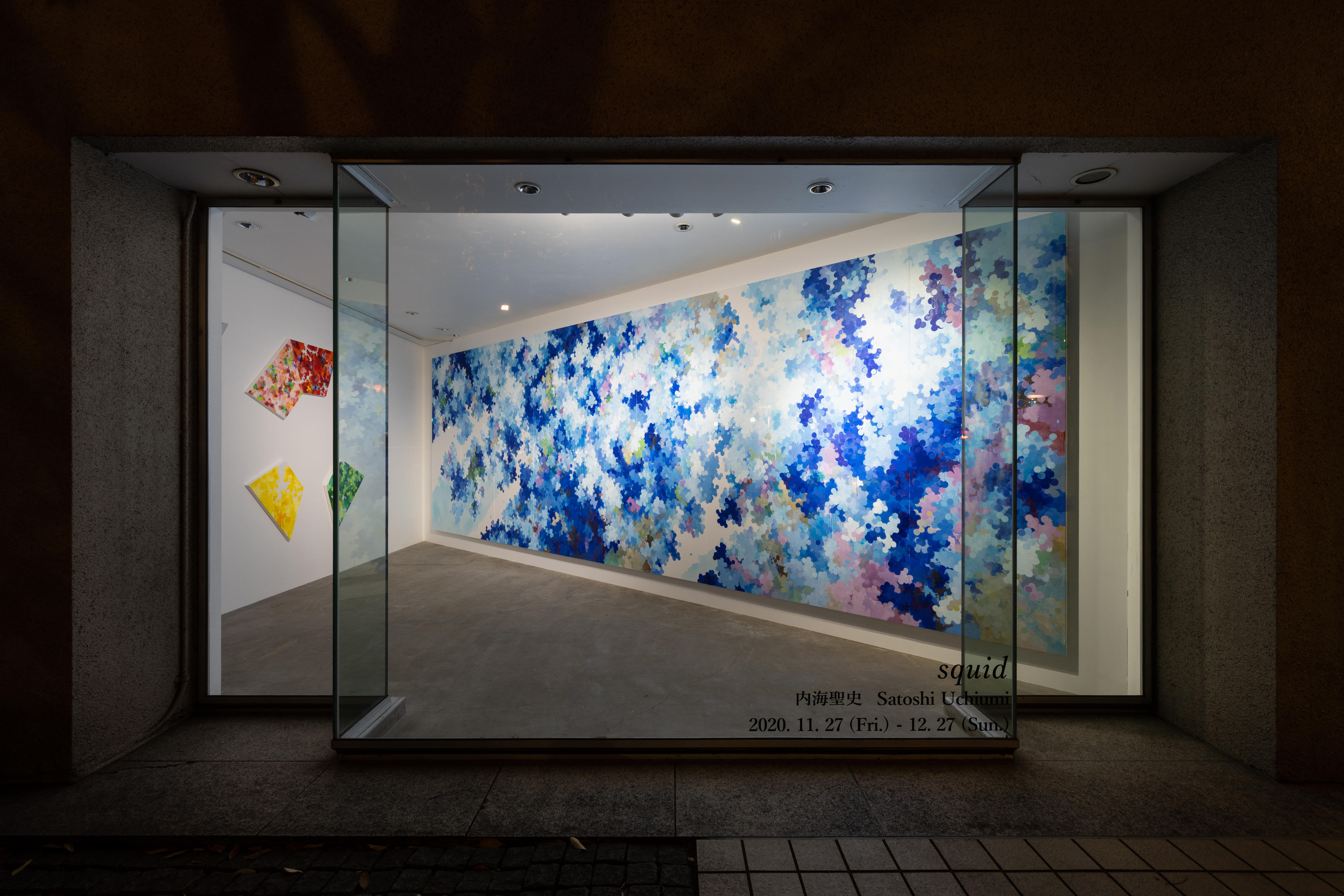
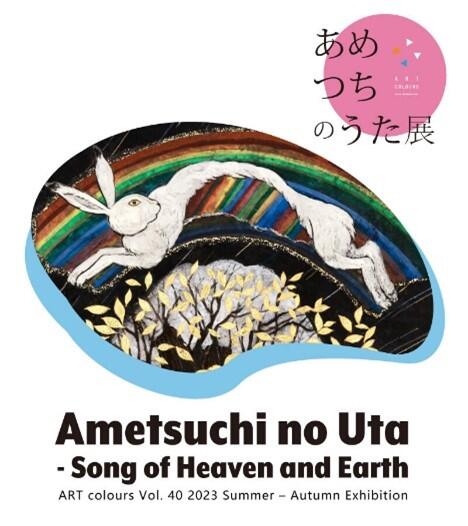
![[Interview] Kasumi Ueba : ZEPHYR - a gentle wind from west](https://artfrontgallery.com/project/img/2ae45dcaa0563f93f73a764028977da38b7c22b0.jpg)



